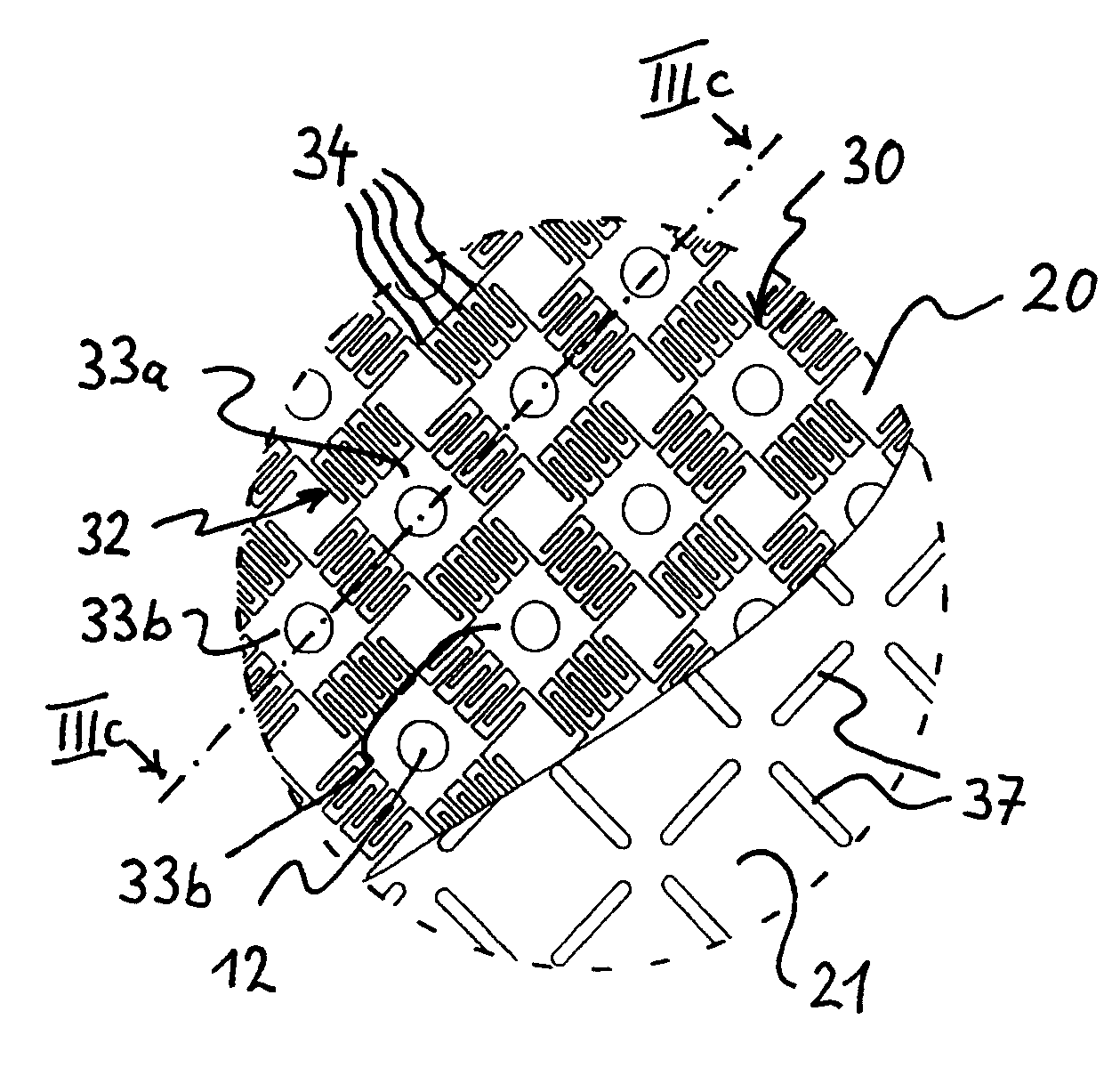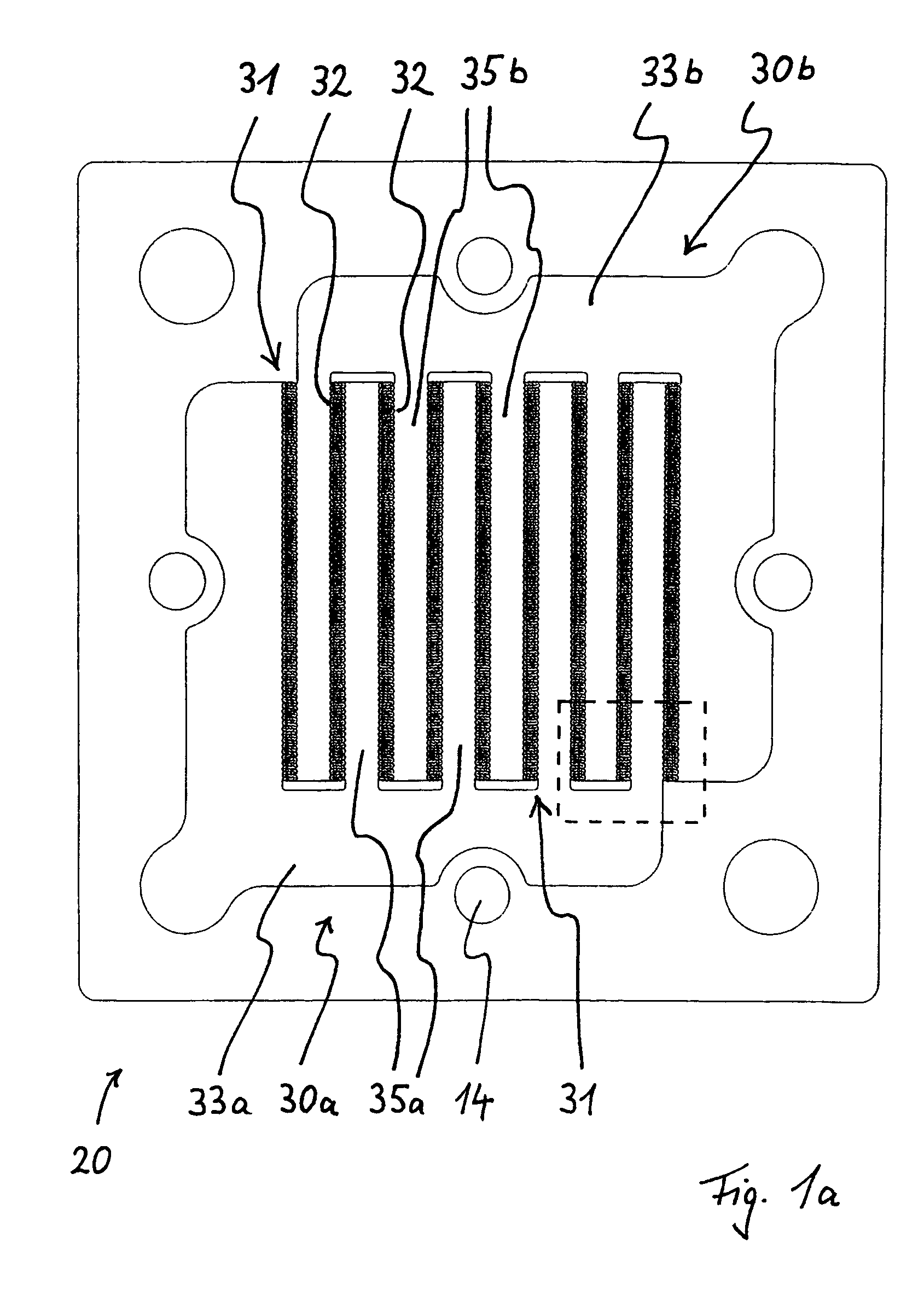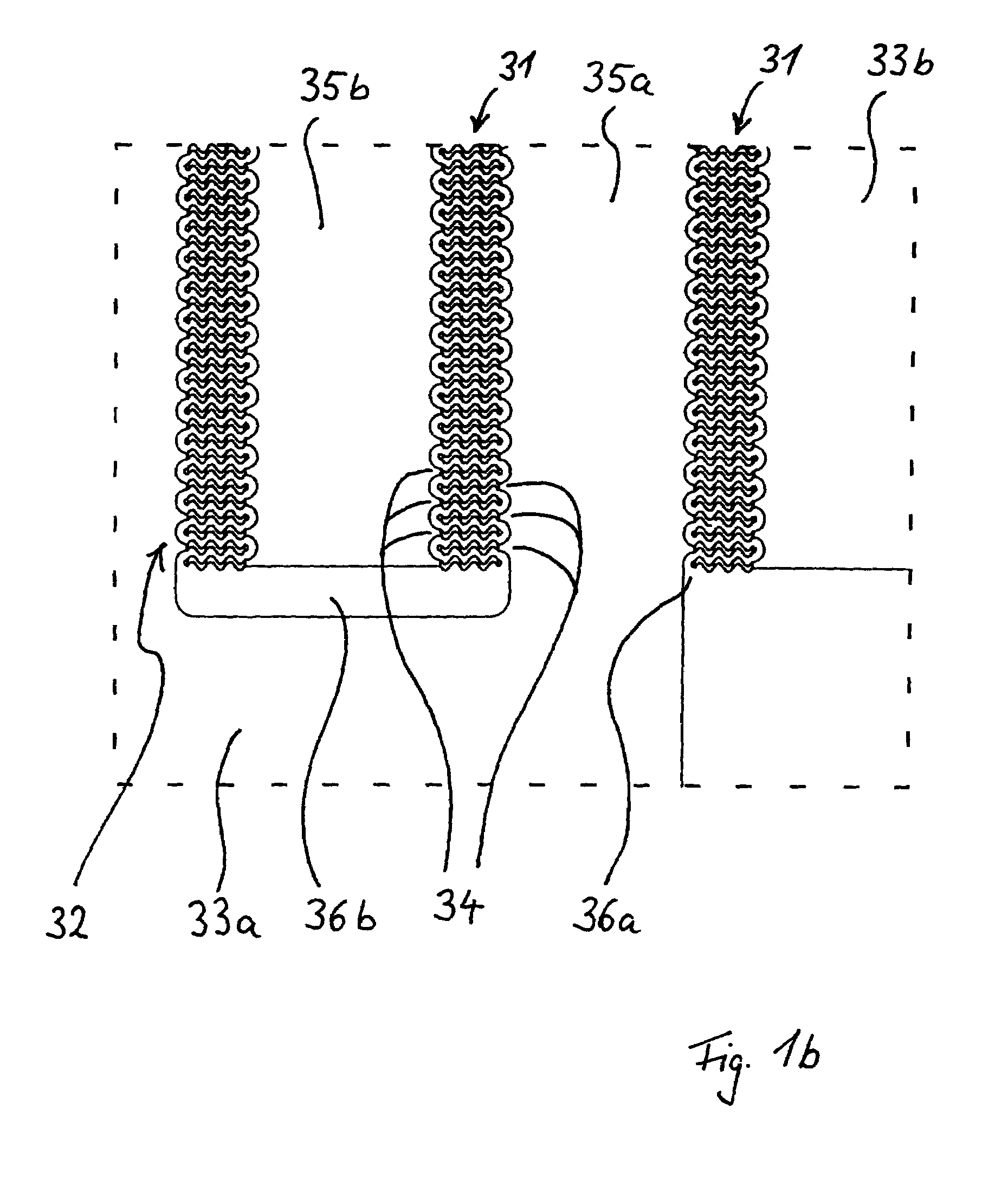Micromixer
a micro-mixer and mixer technology, applied in the field of micro-mixers, can solve the problems of limited use of single mixers for large-scale chemical production and limited throughput, and achieve the effects of increasing the ratio of mixing zone area, increasing throughput per surface area, and reducing the percentage of unutilized surface area
- Summary
- Abstract
- Description
- Claims
- Application Information
AI Technical Summary
Benefits of technology
Problems solved by technology
Method used
Image
Examples
first embodiment
[0041]FIG. 1a shows a mixing plate 20. This mixing plate 20 has two feeding chambers 33a and 33b for the reactants A,B. Both feeding chambers 33a,b branch into four primary channels 35a,b. Microstructures 31 defining the mixing zones 32 between the main channels 35 for the reactants A and B are located on both sides along the main channels 35a,b. The main channels 35a,b intermesh in a comb-like manner. The feeding chambers 33a,b together with the mixing zones 32 each form a mixer cell 30a and 30b.
[0042]The mixing plate 20 also has recesses 14 by means of which the individual plates comprising the micromixer are screwed together.
[0043]FIG. 1b is an enlarged view of that section of FIG. 1a marked with a broken line. One can see that digital channels 34 branch off from the main channels 35a,b. These digital channels are separated from one another by microstructures in the form of thin walls 36a. These walls 36a are corrugated and meandering to increase their mechanical stability. This...
second embodiment
[0060]FIG. 8 shows a second embodiment for the integration of a heat exchanger. In this embodiment, the product is again heated or cooled. The discharge plate comprises two individual plates 21a and 21b. These are arranged parallel to and at some distance from one another to form a chamber 40 for holding a heating medium or coolant. Both individual plates 21a and 21b are provided with discharge ports 37. The product is transported from one side of the cover plate [sic]21 to the other by means of flattened hollow bodies 41a arranged in the ports to form a connection from one side of the discharge plate 21 to the other.
third embodiment
[0061]FIG. 9 shows a third embodiment for heating or cooling the medium. The discharge plate 21 is again a two-piece construction, with an upper slotted plate 21a and a very much thicker lower slotted plate 21b. In addition to the ports 37, the lower, thicker plate 21b also has open-ended slots 42 for holding the coolant or heating medium which extend perpendicular to the ports 37 for the product. It is advantageous if a material with good thermoconducting properties is used for the manufacture of the lower plate 21b.
[0062]In some cases, it can also be desirable to preheat or cool the reactants. An embodiment enabling this is shown in FIG. 10. This is a micromixer with storage chambers 57a,b for the supply of reactants comprising two additional plates 22, 23. A third additional plate 24 is arranged between the first additional plate 22 and the mixing plate 20. This creates an additional chamber 40 between the mixing plate 20 and the third additional plate 24, in which chamber 40 a ...
PUM
| Property | Measurement | Unit |
|---|---|---|
| height | aaaaa | aaaaa |
| height | aaaaa | aaaaa |
| height | aaaaa | aaaaa |
Abstract
Description
Claims
Application Information
 Login to View More
Login to View More - R&D
- Intellectual Property
- Life Sciences
- Materials
- Tech Scout
- Unparalleled Data Quality
- Higher Quality Content
- 60% Fewer Hallucinations
Browse by: Latest US Patents, China's latest patents, Technical Efficacy Thesaurus, Application Domain, Technology Topic, Popular Technical Reports.
© 2025 PatSnap. All rights reserved.Legal|Privacy policy|Modern Slavery Act Transparency Statement|Sitemap|About US| Contact US: help@patsnap.com



